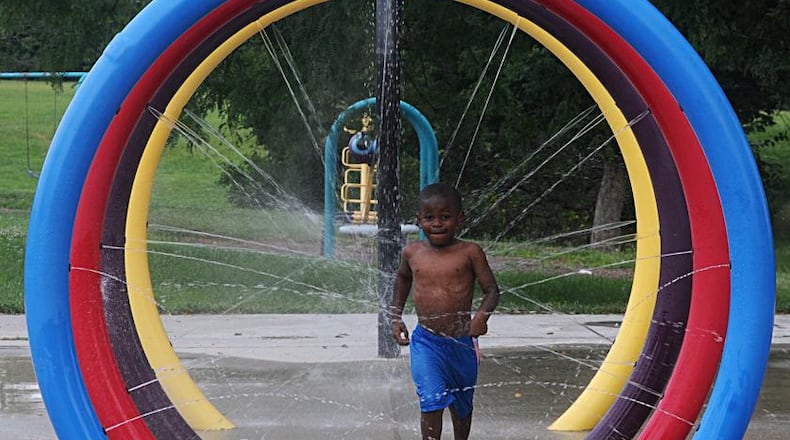“This process, we hope, is just going to help us get that robust recreation and parks plan that we can use moving forward,” said Kelly Pressel, division manager of sports for Dayton’s recreation department.
The Dayton Recovery Plan calls for spending about $4.4 million of the city’s federal rescue funds constructing as many as eight new spray parks and upgrading four existing spray parks.
Right now, the city has seven spray parks, and three have been upgraded in recent years.
The city’s planned spray park upgrades include in-ground sprayers, water cannons and dump buckets.
The Dayton Recovery Plan is a blueprint for how the city expects to spend its $138 million in federal rescue funds, which come from the American Rescue Plan Act (ARPA).
The recovery plan also allocates $1.6 million for park upgrades like new playground equipment, shelters, restrooms and repaved basketball courts, walking paths and parking lots.
The city is going to hire a consultant to analyze data including information about where school-age children live and are concentrated to identify the best locations for new spray parks.
City officials say the city will seek public input about the proposed projects and project locations when the time is right.
“Once we know where the demographics say it makes sense to add a new spray park, clearly we’ll bring in some neighborhood voices and talk through what the process is, what the timing is, get input,” said Dayton City Manager Shelley Dickstein.
Dayton is home to more than 30,000 children, according to Census data, and more than one quarter of residents in some areas of the city residents are under the age of 18.
The consultant will help develop a needs assessment and a five-year strategic plan that will evaluate facilities, programming parks and spray parks, Pressel said.
The plan will look at “what amenities we have, what do we need, and allow us to use that data to further drive the placement of some of these improvements,” she said.
About the Author


